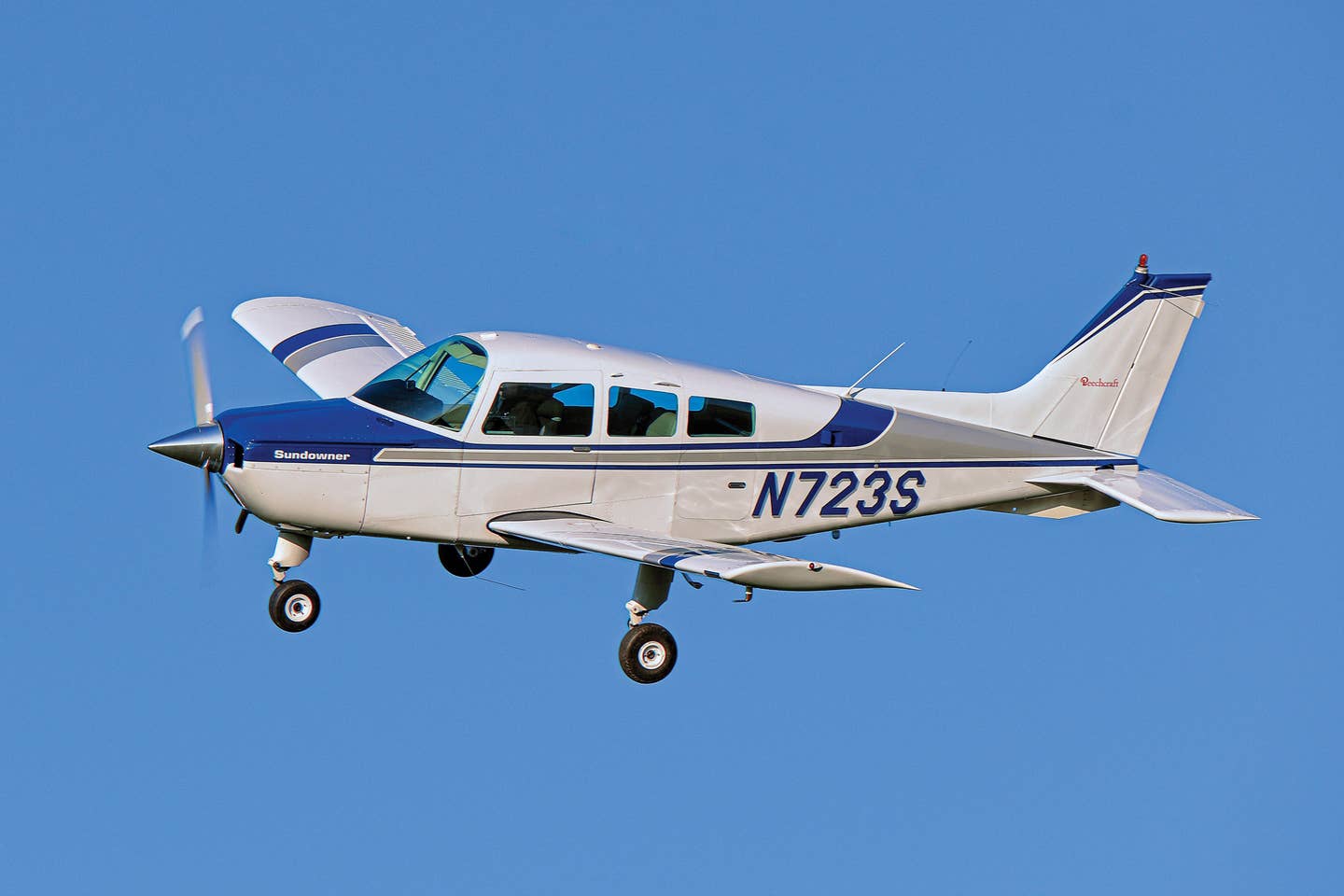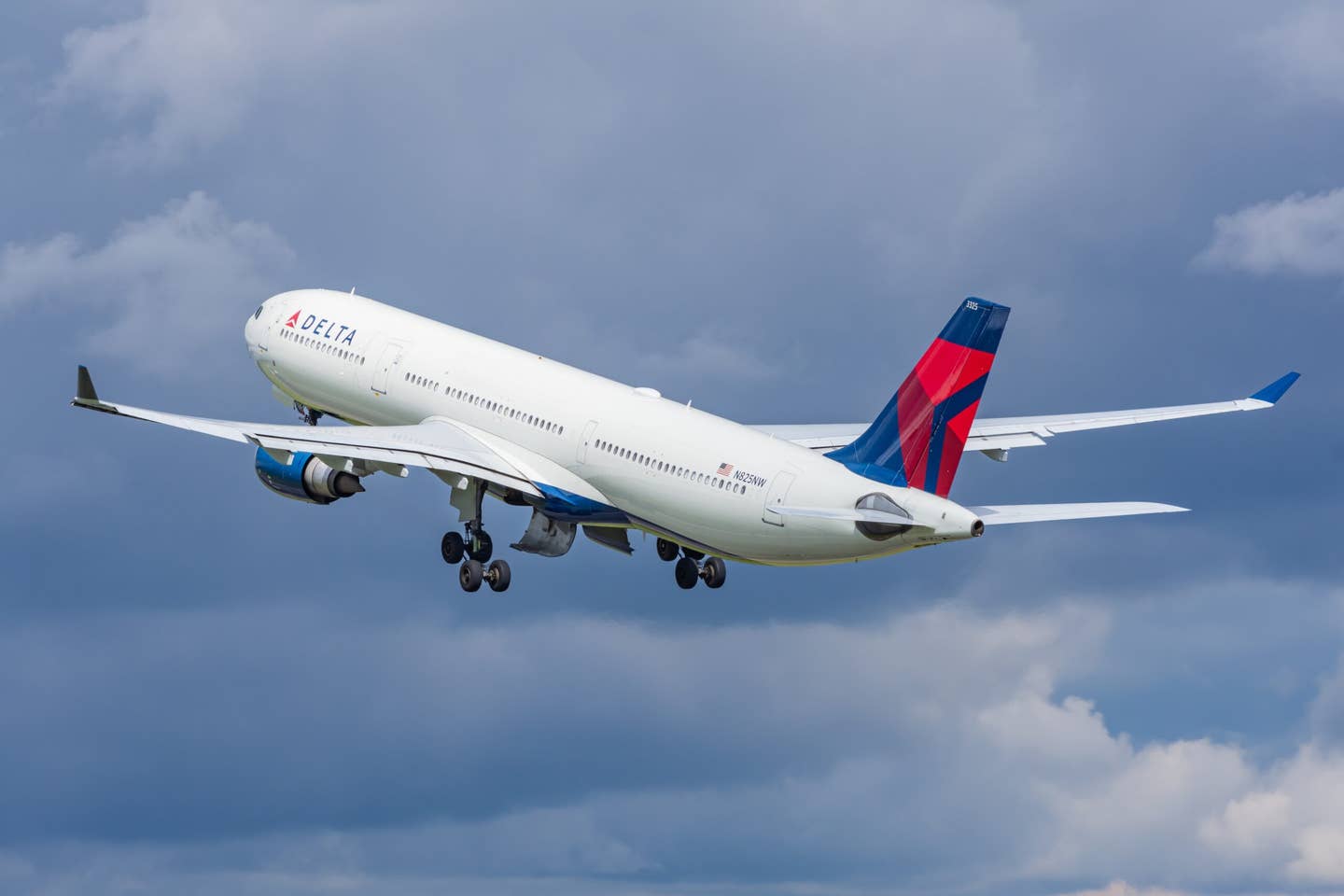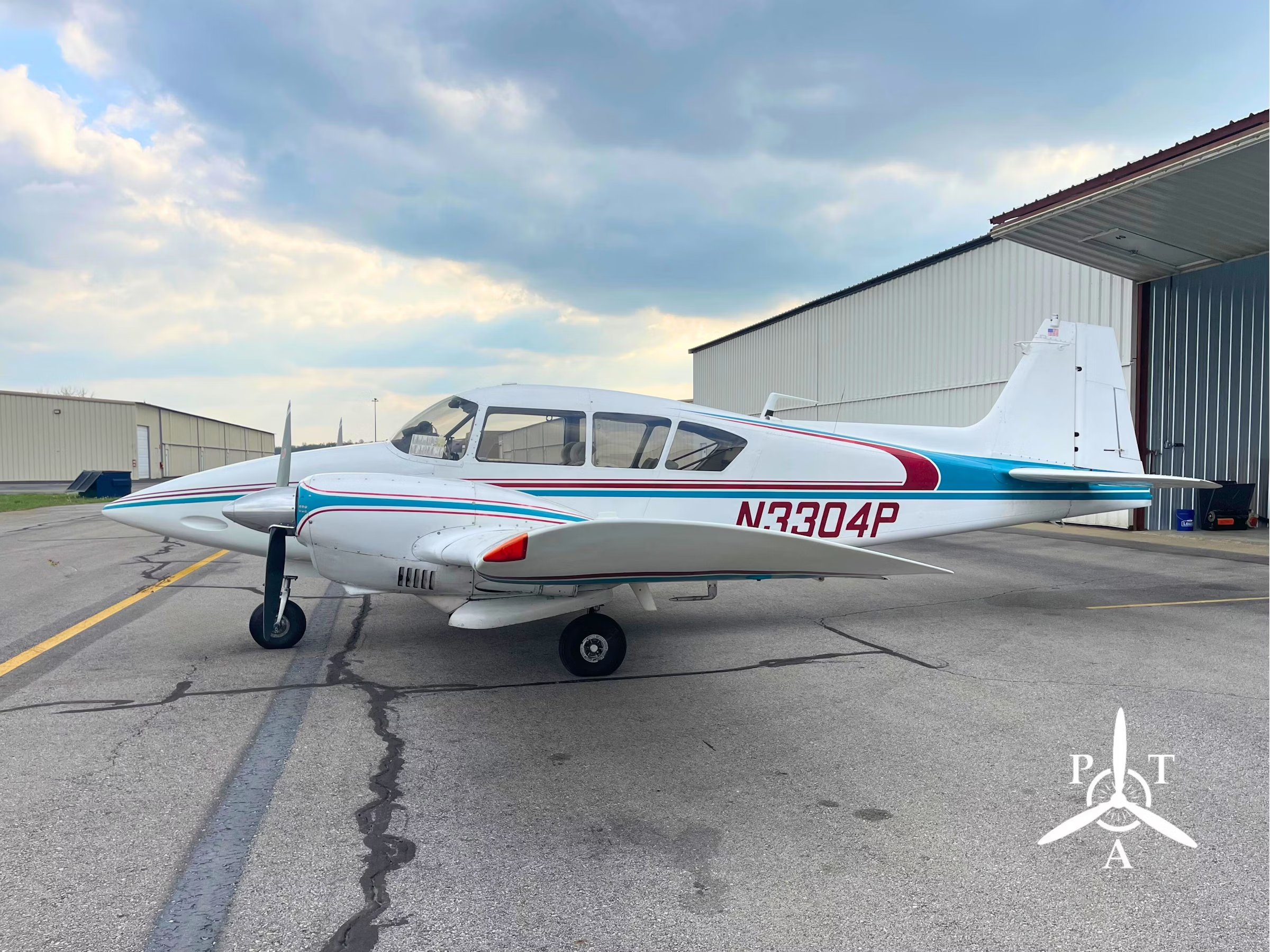
The airplane simply does what is asked of it with little complaint. Jason McDowell
In the early 1960s, general aviation was experiencing tremendous growth, and Beechcraft wanted a bigger slice of the pie. The competition’s ever-expanding product offerings were not going unnoticed, and Beechcraft decided to expand into new market segments. It developed a new, lower-cost training-and-touring airplane that provided stable comfort for long trips, the sturdiness necessary for a trainer, and even limited aerobatic capability. And thus, the Musketeer was born.
Over the following 20 years, the Musketeer would evolve into a wide variety of subtypes. More than 4,000 examples would be built, including the more powerful Sundowner and the retractable-gear Sierra. Here, we’ll explore the fixed-gear variants of the Musketeer family—and evaluate whether the combination of Beechcraft quality and refinement, at a price comparable to a basic Cessna or Piper, remains as attractive today as it was then.
Model History
Presented as a simpler and less expensive alternative to the popular Bonanza, the Musketeer was launched as a 1963 model following a particularly speedy development process. Beechcraft took the concept from a blank sheet of paper to full FAA type certification in only 16 and a half months.
The Musketeer family was marketed as something of a Swiss Army knife of GA aircraft, able to fill multiple roles from training to longer-distance touring. Perhaps as a result, few general aviation aircraft have as confusing an assortment of model numbers, subtypes and names. The Musketeer Custom, for example, became the Sundowner in 1972, when midway through production, Beechcraft changed various names and model numbers. Similarly, the A23-19 was configured as a two-seat trainer and became the B19 Sport. Later models added—at various points—a third side window, a second door, electric flaps, a wider cabin, and even an aerobatic kit that permitted basic aerobatic maneuvers. Other models were available with two small seats in the rear baggage area, for a total of six seats.
Over the 20-year production run, entry-level models were equipped with the 165 hp Continental IO-346 and 150 hp Lycoming O-320, while the more upscale models sported the 180 hp Lycoming O-360 and 200 hp IO-360, some with constant-speed props. Gross weights range from 2,200 to 2,550 pounds, depending on the specific model and whether the aircraft has been modified with a gross-weight-increase kit. Useful loads range from 800 to 1,050 pounds, again depending on the model.
Two books that have covered the type (Kites, Birds & Stuff: Beech Aircraft by P.D. Stemp and The Fabulous Flight of the Three Musketeers by Gene Nora Jessen) each dedicate multiple pages to outlining all the various permutations of the type in comprehensive lists that specify production numbers and serial-number ranges.
The IO-346 Engine
It’s rare for an engine manufacturer to design and build an engine for only one aircraft type, but that’s precisely what occurred with Continental and the IO-346. Produced for only five years, the 165 hp engine has a 1,500-hour time between overhauls and is essentially a four-cylinder predecessor to the popular six-cylinder IO-520.
The engine has some significant strengths. Owners regard it as reliable and well-designed, and many feel it produces more power than the rated 165 hp. But the availability of parts and maintenance is a concern. As of this writing, Continental has only one part listed in its entire system for the engine (cylinders), so owners are forced to scour eBay and other classified listings for parts, scooping them up for future use whenever they become available.
Only 540 examples of the engine were produced, and with an ever-dwindling number of camshafts, crankshafts and crank cases in existence, the scarcity of parts will become only more challenging as they’re used up. So, while the engine itself provides good reliability and performance, prospective owners should carefully consider the pros and cons before buying.
Market Snapshop
A survey of Musketeers and Sundowners listed for sale at the time of this writing found 18 examples ranging in price from $26,500 to $68,000, with a median price of $39,900. Most had midtime engines, and the median airframe time was a relatively low 3,300 hours.
The Musketeer family is one of the least expensive means of obtaining a certified aircraft equipped with the 180 hp Lycoming O-360. Based upon a survey of online listings, they can presently be had for tens of thousands of dollars less than Cessna 172s and Piper Cherokees equipped with the same engine.
Early 150 hp Musketeers are sometimes shunned by prospective shoppers in favor of the more powerful examples. This can be a mistake, as the lower weight of the 150 hp models maintains a comparable power-to-weight ratio. Additionally, the entire Musketeer family is equipped with 60-gallon fuel tanks. Compared with the 40- to 50-gallon tanks of comparable Cessnas and Pipers, this adds flexibility. Pilots can fill the tanks for long-range flights or leave some fuel behind for improved takeoff and climb performance.
Check Out More: Approachable Aircraft
Flight Characteristics
Despite the brash, swaggering image of its name, the Musketeer is anything but a swashbuckling daredevil. In terms of flight characteristics, the name “Engineer” or “Consultant” might be more fitting because the airplane is defined by quiet competence as opposed to snappy bravado. The airplane simply does what is asked of it with little complaint.
A second, left-side door was optional in the early years and eventually became standard, simplifying entry into the cabin. Once inside, Beechcraft’s goal to provide Bonanza quality at a lower price point becomes evident because the yoke, pedals and other touch points have a solid feel, devoid of any creaking or flex that can be found in some other types.
Like any other aircraft model, takeoff performance varies based on engine type. The performance charts, however, can be misleading at first glance; under identical conditions, the 180 hp Sundowner is listed as requiring approximately 10 percent more distance than the 150 hp Musketeer. A closer look reminds us that the more powerful airplane also includes a 250-pound greater maximum takeoff weight. A buying decision must therefore take into account the whole picture, considering not only horsepower but also fuel burn and useful load.
Visibility from the cockpit is fantastic, with the wing positioned far enough aft to provide a nearly unobstructed view downward from the front seats. The airplane is stable in cruise and remains stable in bumpy conditions. Handling is unremarkable, the controls delivering what is asked of them with the expected results, predictable feedback and no complaints. Beechcraft added an aileron-rudder interconnect to reduce the likelihood of stall or spin accidents, and it goes largely undetected during normal flying and maneuvering.
As comfortable as the Musketeer is on cross-country flights, owners concede that they will never win any air races; cruise speeds hover around 110 ktas in 150 hp airplanes and 120 to 125 ktas in 180 hp examples, burning 8 to 9 gallons and 11 to 12 gallons per hour, respectively. With the aforementioned 60 gallons of fuel capacity, the 150 hp models boast a maximum endurance of nearly nine hours and a still-air range of more than 900 miles.
The modest cruise speed isn’t far from the 95-knot limitation of the flaps, so a slight power reduction makes it easy to set up for an approach with 30 to 35 degrees of flaps available, depending on the model. Actuation varies as well, with some models sporting a manual floor-mounted lever and, on others, an electric, three-position switch adjacent to the power quadrant.
The trailing-link landing gear does a good job of absorbing firm landings, and the rubber discs minimize the tendency to bounce or rebound. Crosswind landings are made easier with main gear that, at nearly 12 feet apart, is spaced almost 2 feet wider than a Cherokee and more than 3 feet wider than a 172.
Musketeers have earned a minor reputation of being tricky to land well, and a survey of National Transportation Safety Board reports does reveal an assortment of incidents stemming from porpoising and improper flaring. Owners report that this is at least partially related to a CG that trends toward the forward limit. With two larger occupants in the front seats and nothing in the rear seats and baggage area, it’s easy to find oneself outside of the CG envelope, and with a forward CG, the elevator can run out of authority in the flare. This is further exacerbated during a flight because the CG moves forward as fuel is burned.
To remedy this, many owners make a habit of keeping supplies and even bags of sand in the rear luggage compartment. Midway through production, Beechcraft offered an optional 10- or 22-pound tail weight to counter the forward CG, which owners report improves the landing characteristics immensely. The Beech Aero Club offers detailed plans and specifications to fabricate a tail weight for aircraft lacking one.
Ownership
Compared with some other types, the Musketeer family is easy to own and maintain. With 4,460 examples produced, airframe parts are plentiful, and while it’s always worth seeking out a mechanic familiar with the type, maintenance is by the book, with no significant traps or pitfalls to newcomers.
Aside from the usual avionics upgrades, a freer-flowing exhaust kit and a well-respected vortex-generator kit, most Musketeers remain largely unmodified from their original factory configuration. While a number of ADs apply to each model, few are recurring and most are straightforward to address.
Shock-absorption duties are provided by simple rubber discs, and owners enjoy their trouble-free simplicity. While pricey at $4,000 to $5,000 (or around $1,000 via a third-party supplier), they last approximately 10 years and require zero maintenance. Most owners have replaced the corrosion-prone, black-colored ductwork that routes air through the cabin with modern, orange-colored ductwork. This is considered to be a particularly important modification that requires approximately $450 in parts and 10 to 12 hours of labor to convert.
Every owner would be well-advised to become a member of the Beech Aero Club. This well-organized type club provides a wealth of expertise, arranging social events, and renting specialized tools to members for low rates. Even prospective owners would benefit from membership; a continuously updated pre-purchase inspection guide is available, outlining all type-specific concerns to address when inspecting an aircraft.
Compared with more-popular types such as the Cessna 172 and Piper Cherokee, the Musketeer family offers a compelling set of strengths and few weaknesses for a relatively low price. Over the years, the type has quietly delivered refinement and reliability to its owners while going largely unnoticed by the masses.
Though a Musketeer will cruise about 10 knots slower than a Cessna 172, the additional 20 gallons of fuel capacity might enable it to reach the destination first if a fuel stop can be omitted. With a relatively large fleet size, few onerous ADs, and an enthusiastic and engaged owner’s group, the Musketeer family offers real merits that make ownership a pleasure for those who own, maintain and fly them.
This story appeared in the March 2021 issue of Flying Magazine

Sign-up for newsletters & special offers!
Get the latest FLYING stories & special offers delivered directly to your inbox






